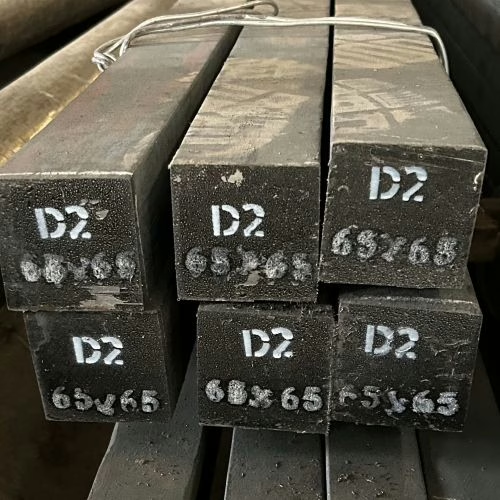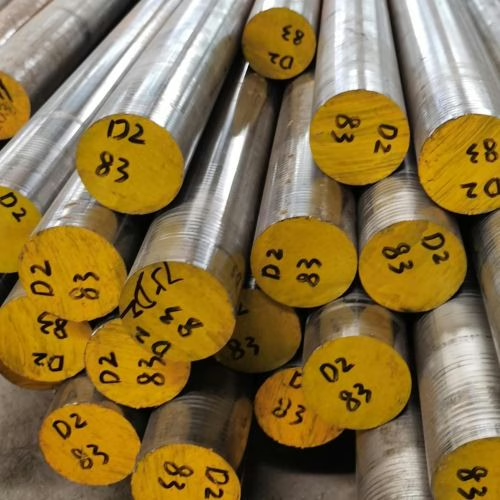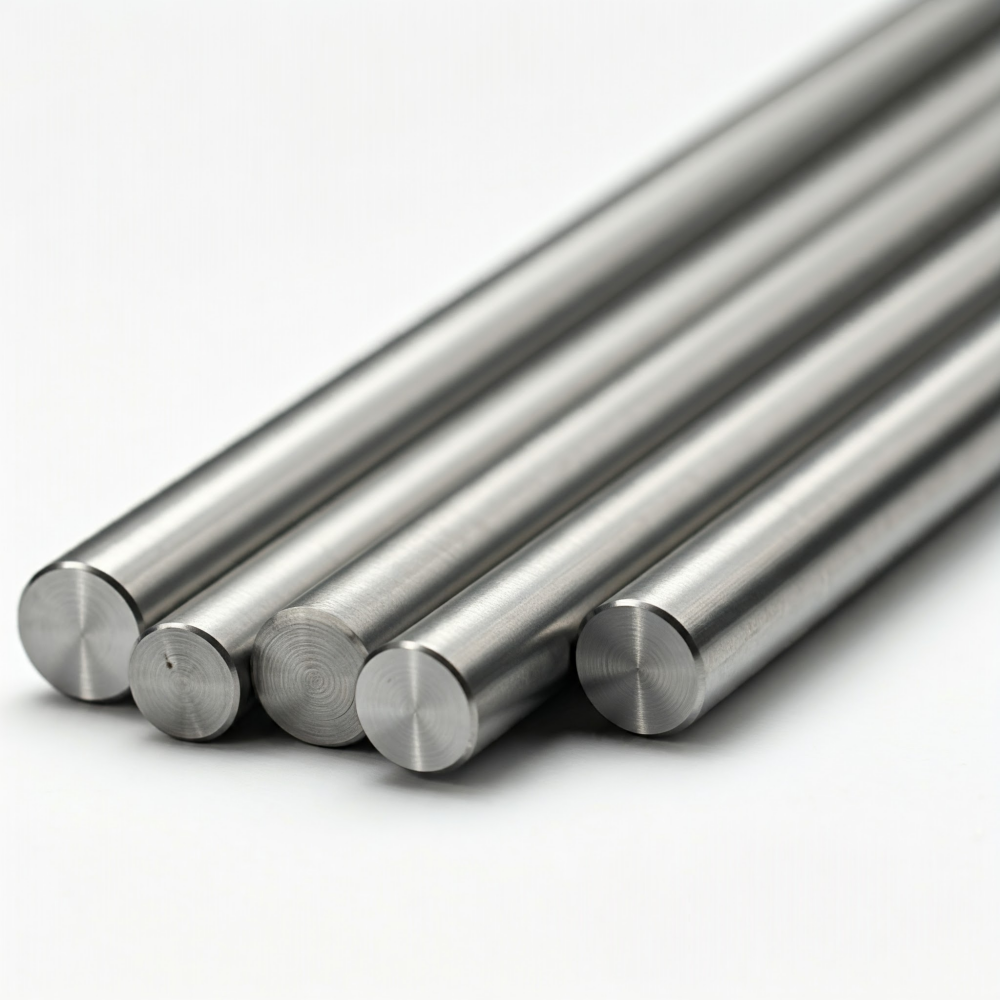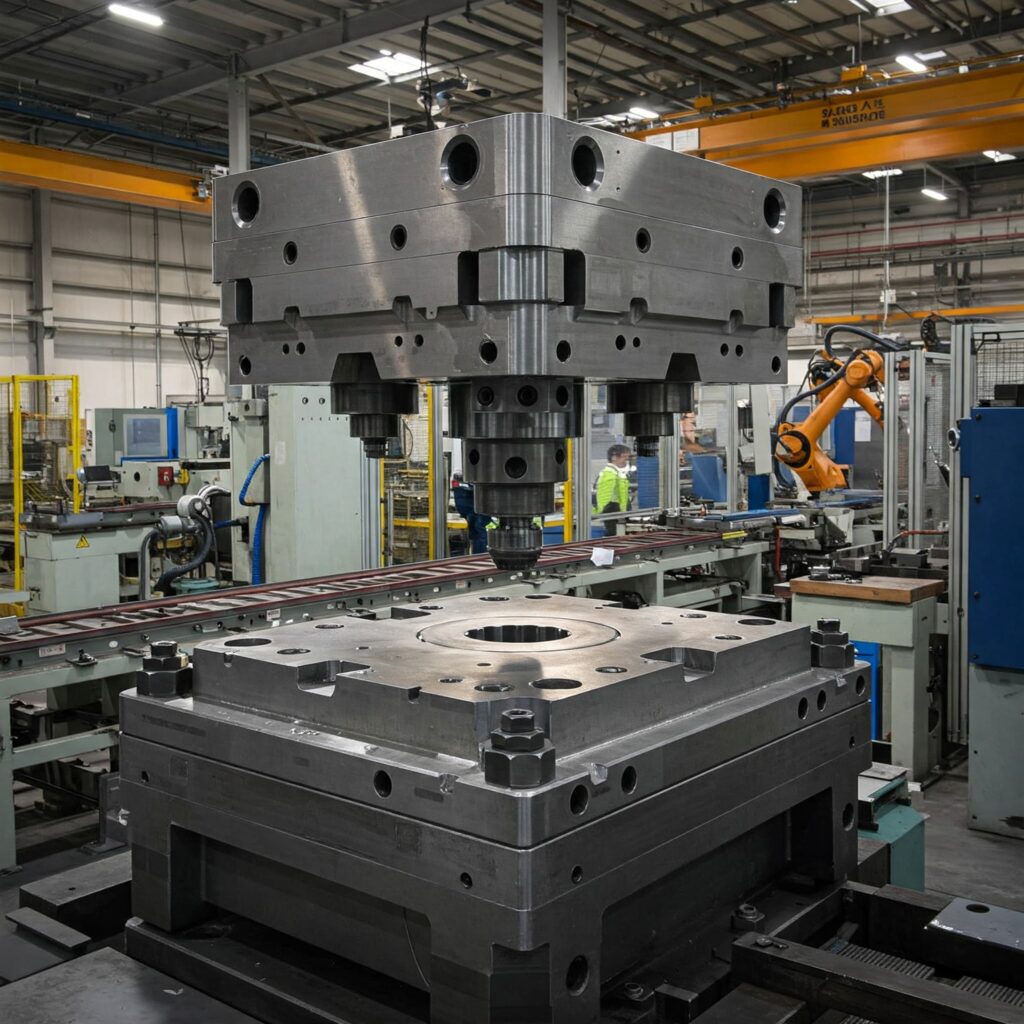Stal narzędziowa D2 is a high-carbon, high-chromium air-hardening steel characterized by exceptional odporność na zużycie, excellent dimensional stability during quenching, and high resistance to softening. Despite its challenging machinability and weldability due to high alloy content, this steel grade remains widely used in long-life molds, punching dies, and cold-forming dies. Heat treatment is critical for D2 steel, as it transforms its microstructure to achieve the required high hardness, wear resistance, and toughness. Similarly, troubleshooting for D2 tool steel is also important. If heat treatment is improperly performed, D2 steel will fail to attain the necessary hardness and wear resistance, rendering it unsuitable for demanding applications.
For example, D2 frequently retains a significant amount of austenite after initial quenching, which can lead to brittleness and dimensional instability. Therefore, double or triple tempering is essential to convert this retained austenite into a stable, more rigid martensitic structure and to relieve internal stresses, thereby extending tool life and ensuring optimal performance. Preheat cycles are also crucial for preventing thermal shock and minimizing distortion.
This article provides a comprehensive “recipe” for successfully heat treating D2 tool steel, including best practices for each step, quality control measures, and effective troubleshooting techniques for common problems such as distortion, cracking, and issues with hardness or microstructure. By understanding and adhering to these guidelines, you can significantly lengthen tool life and optimize performance.
Understanding D2 Tool Steel
D2 tool steel chemical composition includes approximately 1.40 – 1.60% Carbon, 0.10 – 0.60% Manganese, 0.10-0.60% Silicon, 11.00-13.00% Chromium, 0.70-0.1.20% Molybdenum, and 0.5-1.10% Vanadium, with the remainder being Iron.
D2 tool steel exhibits exceptional wear resistance due to its high-carbon martensitic structure and the presence of abundant alloy carbides. During quenching, D2 tool steel maintains excellent dimensional stability with minimal microstructural distortion and demonstrates outstanding resistance to high-temperature softening. Its hardness typically ranges from 60 to 62 HRC, though it can reach up to 65 HRC.
However, D2 steel exhibits low toughness, and its high alloy content makes machining and grinding extremely difficult. The high carbon content of D2 steel also makes welding it very challenging.
D2 Steel Heat Treatment: Step-by-Step Best Practices
Proper heat treatment of D2 tool steel is akin to following a precise recipe, where each step, temperature, and time is critical for the final outcome.
1. Preparation
First, when rough machining D2 workpieces, positive tolerances must be maintained because finishing operations will be performed after heat treatment. This process removes approximately 0.010 to 0.015 inches of decarburized layer from the surface. Additionally, the surface of D2 workpieces must undergo degreasing.
2. Łagodzenie stresu
After rough machining, forming, or welding operations, D2 steel may develop residual stresses. Therefore, stress relief steps are required to reduce the risk of cracking during heat treatment. Heat slowly and uniformly to 649-677°C (1200-1250°F). Hold at this temperature for 1-2 hours per inch (25.4 mm) of thickness, with a minimum of 2 hours. Then, slowly cool the part in the furnace to room temperature. For intricate parts, uniform heating and cooling are especially crucial to prevent new stresses.
After stress relief, remeasure the D2 workpiece. If dimensional changes occur, perform light machining to correct the dimensions.
3. Podgrzewanie wstępne
To prevent cracking caused by thermal shock in D2 workpieces, a preheating treatment is required. To minimize oxidation and decarburization, the D2 parts are wrapped in stainless steel foil.
For D2, preheat to 650°C (1200°F) for 10-15 minutes. For larger or intricate tools, a multi-stage preheating process is recommended: first to approximately 400°C, then to approximately 800°C, and finally, quickly transferred to the furnace at the final hardening temperature. The holding time up to 800°C is typically 20-30 seconds per millimeter of diameter or section thickness.
4. Austenityzowanie
The austenitizing temperature for D2 tool steel typically ranges between 980°C and 1065°C (1800°F and 1950°F).
Higher temperatures can increase the secondary peak hardness but also lead to an increase in retained austenite and unwanted grain growth. Soak time is 1 hour per inch (25mm) of cross-section. Prolonged soaking beyond the necessary time can lead to a deteriorated microstructure, grain coarsening, and increased retained austenite. Next step: quenching.
5. Gaszenie
Quenching rapidly cools steel from its austenitizing temperature, transforming austenite into martensite to impart high hardness to D2. Martensite formation typically occurs below 205°C (400°F).D2 is an air-hardening tool steel. The advantage of air quenching is minimizing distortion. However, for large workpieces, achieving full hardness through air cooling alone may be unattainable, necessitating consideration of oil quenching.
To further enhance properties and reduce unwanted phases, consider cryogenic treatment before tempering.
6. Cryogenic Treatment
Tempering is a critical heat treatment step following quenching, aimed at reducing brittleness, transforming retained austenite, and forming carbides in the martensite, thereby optimizing the properties of D2 steel.
Typical tempering temperatures for D2 are around 515°C (960°F) for the first temper and 480°C (900°F) for the second. If using multiple tempers, each subsequent temper should be performed at a slightly lower temperature (e.g., 14°C or 25°F lower) than the previous one to retain the original hardness level. Each tempering cycle requires a soak time of 2 hours per inch (25mm) of cross-section. It is critical nie to undertemper parts. Always allow the part to cool to room temperature between tempering cycles to minimize retained austenite.


Troubleshooting Common D2 Heat Treatment Problems
1. Low Hardness or Strength
This may be due to insufficient austenitizing temperature or inadequate holding time (“underheating”), resulting in incomplete martensitic transformation.
It is recommended to adjust the austenitizing temperature and ensure sufficient holding time, or implement multiple tempering cycles, and consider cryogenic treatment to address residual austenite issues.
2. Distortion and Warping
Residual stresses generated during machining or forging operations on D2 steel are the primary cause. However, it is also possible that insufficient uniformity of heating the D2 workpiece during heat treatment contributed to the issue.
The solution involves implementing stress relief treatment after rough machining and before hardening, along with ensuring uniform heating of D2 components during heat treatment. Uniform heating can be assessed by observing whether the color of the furnace wall matches that of the workpiece. When the furnace wall and workpiece exhibit consistent color, it indicates that the D2 component has been heated uniformly.
3. Quench Cracking
Excessively rapid cooling or uneven cooling may cause cracking, so the cooling rate must be controlled. Stress relief before air quenching can also reduce the risk of cracking.
4. Overheating and Burning
Excessive austenitizing temperature or prolonged soaking beyond recommended times can lead to overheating and even burning of the steel. This destroys or burns the molecular structure, causing brittleness and grain coarsening.
Strictly adhere to the recommended austenitizing temperature and holding time.
5. Decarburization and Oxidation
Heating steels to high temperatures, without proper atmosphere control, can lead to oxidation (scaling) and decarburization (loss of carbon from the surface). Decarburization reduces surface hardness and wear resistance.
Using salt bath furnaces or controlled atmosphere furnaces can prevent or minimize these issues. Alternatively, wrapping D2 workpieces in stainless steel foil can reduce the likelihood of decarburization.
6. Excessive Retained Austenite
High austenitizing temperatures, rapid cooling rates, and specific alloying elements can result in significant amounts of retained austenite after quenching. This can lead to dimensional instability, as retained austenite can spontaneously transform into untempered martensite in service.
Multiple tempering treatments can transform retained austenite and temper newly formed martensite. Cooling to room temperature between tempering cycles is also critical for minimizing retained austenite.
Wniosek
The optimal performance of D2 tool steel in demanding industrial applications is inextricably linked to precise and well-executed heat treatment. By adhering to the detailed outline—from meticulous preparation and stress-relieving to controlled austenitizing, quenching, and multiple tempering cycles—engineers can unlock the full potential of D2 for high hardness, wear resistance, and dimensional stability. Proactive troubleshooting of issues like distortion, cracking, and retained austenite ensures quality and extends tool life.


